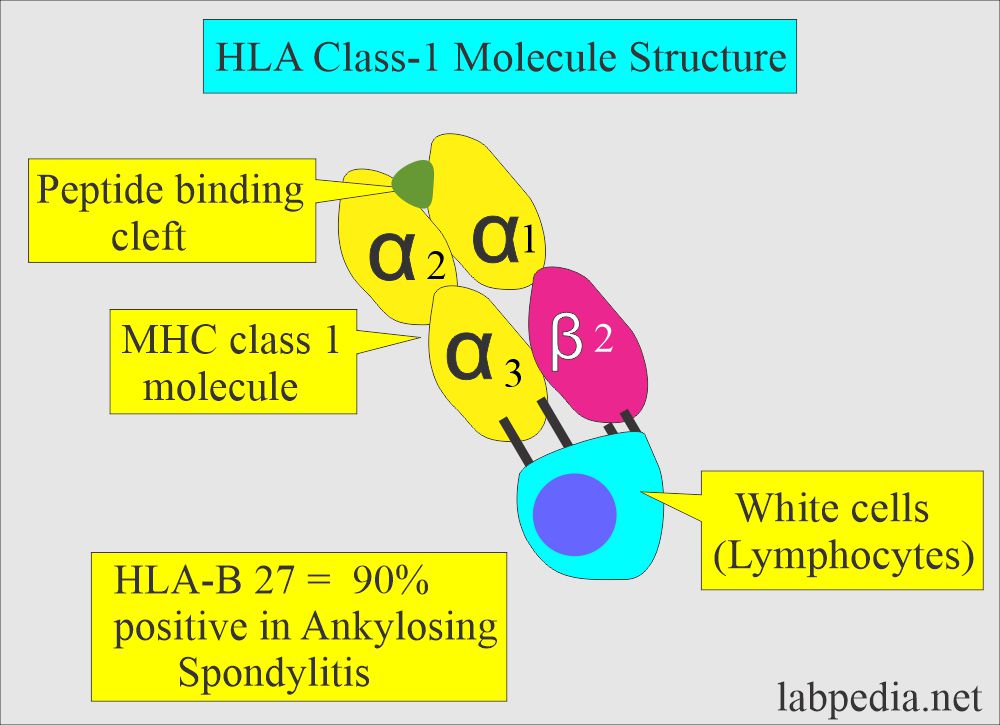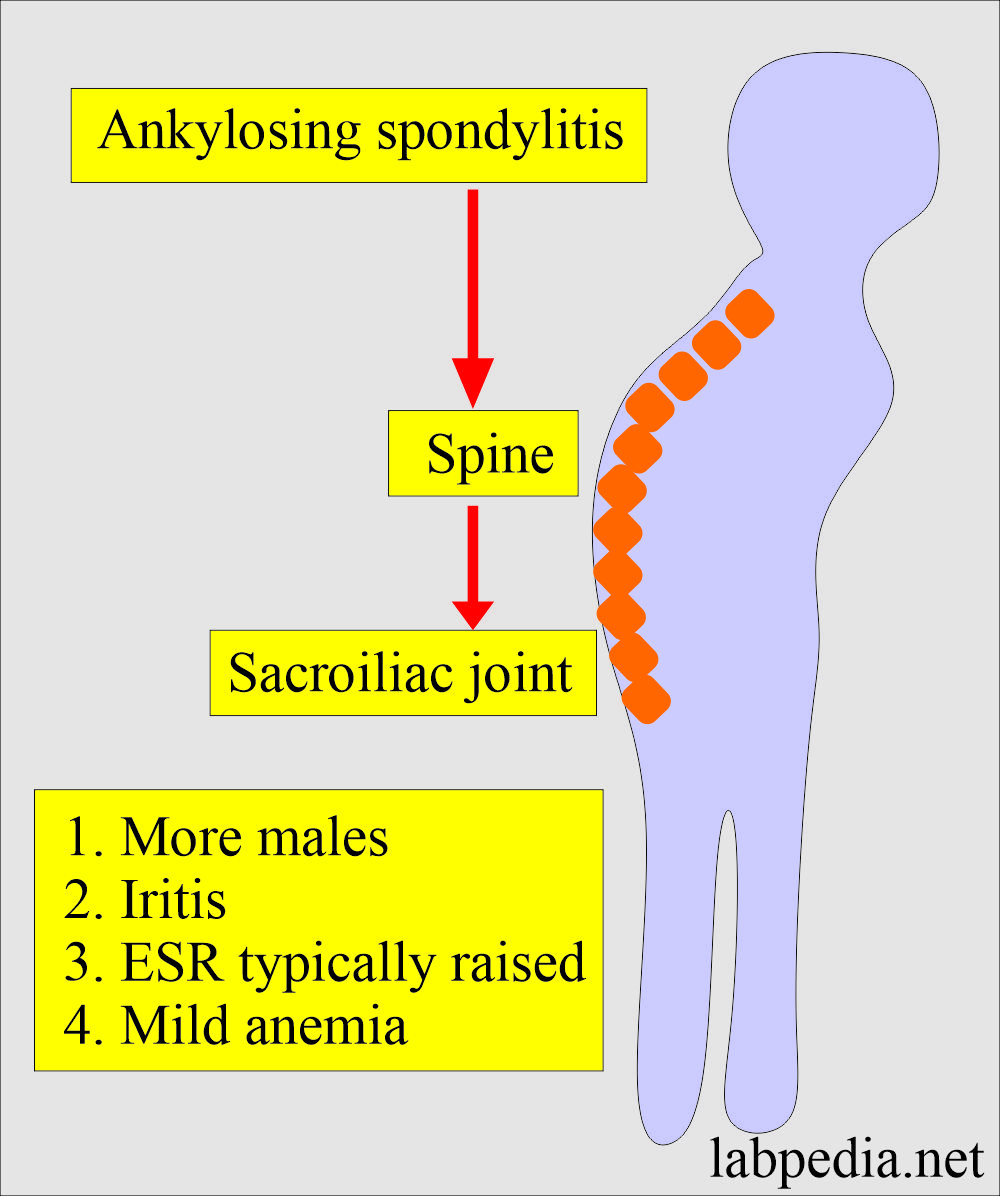Human Leucocyte Antigen B27 (HLA B27), Interpretations
Human Leucocyte Antigen B27 (HLA B27), Interpretations
What sample is needed for Human Leucocyte Antigen B27?
- The patient’s serum is needed.
- A random sample can be taken; no special preparation is needed.
What are the Indications for Human Leucocyte Antigen B27?
- To diagnose Ankylosing spondylitis.
- HLA B27 is also advised when the patient has:
- Joint pain and swelling.
- The stiffness of the joints.
- HLA Antigen typing may be done in Bone marrow or kidney transplantation.
- It is advised for Rheumatoid arthritis variants.
- Reiter’s syndrome.
- Yersinia enetrocolitis arthritis.
How will you define Human Leucocyte Antigen B27?
- White blood cells possess a complex antigen substance found in other nucleated cells. It is called the human leukocyte antigen-A (HLA) system.
- It is found on chromosome number 6. Each locus consists of four subloci. Each of these 4 loci contains one gene.
- The four major loci are A, B, C, and D. There is the possibility of the fifth one called DR (D-related).
- HLA-B27 is quite common. It is associated with ankylosing spondylitis in 90% to 95% of Europeans and 50% of African Americans.
- 50% of African Americans have this antigen.
- Reiter’s syndrome is positive in 80% to 90% of Europe and 35% of African Americans.
How will you describe the pathophysiology of Human Leucocyte Antigen B27?
- HLA B27 was discovered in 1972 and is associated with ankylosing spondylitis.
- The major histocompatibility antigen in humans belongs to these antigens on the surface of white cells and the so-called HLA (human leukocyte antigen).
- These are present in the nucleated cells and platelets and are mostly detected in lymphocytes.
- HLA-Ag is present in minimal concentration due to the absence of expression on the RBCs.
- These antigens are labeled at HLA- A, B, C, and D.
- The presence or absence of these genes is present on chromosome 6.
- HLA-B27 is found in 90 % of patients with ankylosing spondylitis.
- HLA-B27 is also present in the normal population in 5% to 7%.
- HLA-B27 is also found in other diseases like Reiter’s syndrome, Anterior uveitis, and Grave disease.
What is the distribution of HLA-B27 in various diseases?
| HLA antigen B27 positive | Risk of developing the disease |
| Ankylosing spondylitis | 90 times (80% to 90%) |
| Anterior uveitis | 15 times (19% to 88%) |
| Reiter’s syndrome | 40 times (80%) |
| Septic arthritis (Yersinia enterocolitica arthritis) | 20 times |
| Normal population | 5% to 7% |
What is the structure of the HAL-Antigen Class-1 molecule (HLA-Ag)?
- Class-1 molecules (antigens) are composed of a single polypeptide chain with 3 domains very similar to the domain of the immunoglobulins heavy chain, and there is one transmembrane domain.
- Class-1 molecules are embedded as transmembrane proteins in the cell membrane; each is non-covalently associated with a single molecule of β2-microglobulin.
- HLA-antigen is distributed on:
- All nucleated cells.
- Platelets.
- Minimal to the absent amount on RBCs.
What will the presentation of Ankylosing spondylitis (AS) be?
- The prominent features of the AS are:
- It primarily involves the spine and sacroiliac joints.
- There is peripheral joint arthritis present in about 30% of the cases.
- You can see iritis in 30% to 40% of the cases.
- The incidence of AS is less in African Americans than in Europe.
- Males are more affected than females.
- ESR is typically raised in 80% to 90% of the cases in active disease.
- There may be mild anemia.
- HLA B27 is positive in about 90% of the cases.
What is the normal Human Leucocyte Antigen B27?
- HLA-B27 is negative.
Where will you see Positive Human Leucocyte Antigen B27?
- Ankylosing spondylitis.
- In close relatives of the patients, it is found in increased frequency.
- Reiter syndrome.
- Grave’s disease.
- Anterior uveitis.
- Chronic active hepatitis.
- Multiple sclerosis.
- Myasthenia gravis.
- Psoriasis.
- Rheumatoid arthritis.
- Celiac disease.
- Juvenile diabetes.
- Hemochromatosis.
Questions and answers:
Question 1: HLA B-27 to which class of HLA system belong to?
Question 2: What is the distribution of HLA class 1 molecule?


